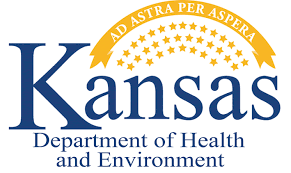Kansas has one nuclear power plant. The Wolf Creek Generating Station near Burlington, KS has one Westinghouse pressurized water reactor that was put into operation in 1985. It generates over a gigawatt of electricity. In 2008, the operator was granted a extension of its license from forty years to sixty years.
The Kansas Department of Health and Environment (KDHE) has a Radiochemistry Unit that is supposed to carry out routine monitoring of the Wolf Creek plant. In case of an accident, this lab would tests samples to determine the extent of contamination of the environment.
The KDHE confirmed this week that the lab has not been staffed or testing samples since late September. Samples are currently being sent to the Iowa State Hygienic Laboratory (ISHL) for routine testing. The KDHE says that public health is not in danger and that there are other labs that can do testing if there is an emergency.
In case of a nuclear emergency at the Wolf Creek plant, the KDHE Radiation Program would test air samples and "work to protect those exposed to radiation. The KDHE Bureau of Water would test and protect the public water supply. The KDHE Bureau of Epidemiology would monitor and track the long-term effects of released radiation. If the Radiochemistry Unit is still not staffed, environmental samples could be sent to the ISHL for testing. The KDHE has an established relationship with ISHL and FEMA has approved their assistance to the KDHE. The ISHL is certified by the EPA for radiological testing.
The emergency management coordinator for Coffee County where the Wolf Creek plant is located says that he only found out about the missing staff at the lab within the past couple of weeks. He is concerned and feels that the situation should be dealt with sooner rather than later. He says that the environmental testing would be most important after an accident to determine which evacuees should be allowed to return to their homes after the accident. The fact that there would be a time lag for samples to be sent out of state for testing is not critical. On the other hand, he does admit that have the samples tested in state at a functioning Radiochemistry Unit during a nuclear emergency would be helpful.
The KDHE has not said what full staffing would be for the Radiochemistry Unit but the Director of the Kansas Organization of State Employees estimates that the usual staffing of the Unit should be about five employees. There were five people on staff until two left by the end of 2014. A third left in July of 2015. The remaining two employees were not trained to do the work of the employees who left. On September 22, the remaining two employees left and have not been replaced. The KDHE has no explanation for why the staffing levels were allowed to drop to zero. A representative of the KDHE says that ads have been posted for new employees and they expect to interview and hire new staff for the Unit as soon as possible. One reason that the posts have not been filled is the salary being offered is far below the median salary for chemists.
Kansas has been in the headlines for the past several years regarding the impact of the tax cuts and budget cuts implemented by the conservative governor and state legislature. Perhaps public safety is not the best place to cut government spending.
